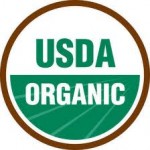What is Organic Farming and Food for Kids ?
 Organic food is one which is produced without the use of synthetic pesticides, insecticides, hormones and artificial fertilizers. This type of food is also free from genetically modified organisation. In case of processed food, it is not processed using chemical additives. During earlier times agricultural and farming operations were fully organic till science stepped into increase yield and use of chemicals was started in agriculture. It is said that organic food is better in taste and is safe, especially for young kids.
Organic food is one which is produced without the use of synthetic pesticides, insecticides, hormones and artificial fertilizers. This type of food is also free from genetically modified organisation. In case of processed food, it is not processed using chemical additives. During earlier times agricultural and farming operations were fully organic till science stepped into increase yield and use of chemicals was started in agriculture. It is said that organic food is better in taste and is safe, especially for young kids.
Organic meat is one which is from animals who have been fed on 100% organic feed including grass and green fodder produced without spraying of chemicals. Organic food should not be mistaken as bacteria free food.
In the developed world, production of organic products is regulated by state laws and the producers have to get their farm where they grow the produce certified and the growing area is under regular inspection. The produce has to be as per the certification standards. In countries like USA food items can be certified organic only if they contain 95% organic components. This does not mean that organic produce is free from bacteria. Meat items like eggs, beef etc. labelled organic need to be properly cooked at a temperature of 180 degree to ensure that the bacteria is killed.
Food Labeling: There are two types of labeling requirements for food. If the packaging is marked ‘organic’ it means that the produce is from organic ingredients which constitute 95% of the product. However, if the packaging is marked ‘Made with organic ingredients’ it will mean that the product has 70% organic ingredients. The third type of labels which will be seen on the food in stores is ‘sustainable’ food. This means that the item has been produced using sustainable methods without causing harm to the animals, land or environment. Organic and sustainable are different concepts and should not be considered as one and the same thing or interchangeable.
Packaging: In addition to these terms, you will find many more types of packaging on food items. These are ‘Bird Friendly or Shade Grown’ generally labelled on coffee indicating that the crop has been grown without disturbing the natural habitat of birds. On egg packaging you may find the mention of ‘Cage Free’ indicating that the birds have not been put in cages but have lived in natural environment. On meat products you may find labelling of ‘Grass fed’ meaning there by that the animal was allowed to roam in grass pastures. These are all different environmentally friendly labelling different from organic food.
Though it is generally considered that organic food is safe but scientists have not been able to certify that this variety of food has more nutritional value as compared to ordinary grown food items. It is an admitted fact that when chemicals like pesticides and insecticides are sprayed on crops; they leave their effect on the crop which continues for a specified period depending upon the nature of spray. If the produce is plucked or chopped before that time, residues remain in the crop. Some of the residue may include metals like nickel which is harmful for humans. Organic food is free of all such residues and should be considered safe to this extent. One thing is certain that these are costlier and used by the elite section of society.
Many manufacturers have obtained organic certification for infant food and baby food. This is recommended as substitutes for non certified packed food and is said to be safe for developing children. As per the manufacturers, infants are consuming toxic free food which, in addition to the development of the body, is good for healthier brain development. This certified infant food has been marketed as a substitute to breast feeding however, as per the recommendations of WHO, breast feeding is the best method of feeding the child during first six months of age. Even otherwise organic certified infant food is not accessible to all sections of society being costly as such breast feeding should be continued during the initial age of the child.